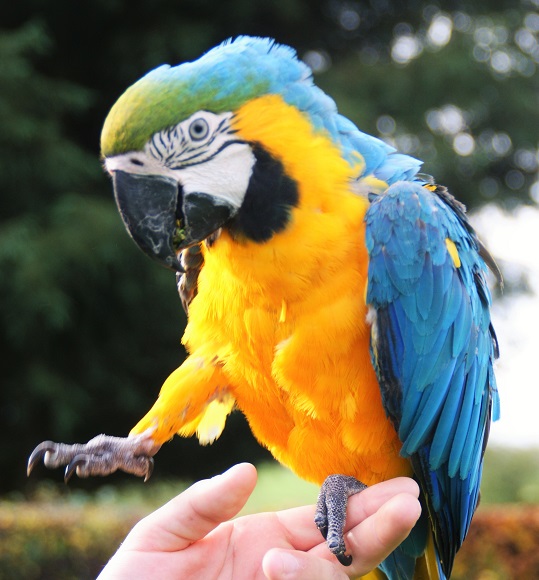Do Parrots Know What They Say?

Parrots are fascinating creatures known for their ability to mimic human speech. But do they actually understand what they are saying, or is it mere imitation? This question has intrigued scientists, pet owners, and animal lovers for decades. Some research suggests that parrots might possess a basic level of comprehension, while others argue that their vocalizations are purely mechanical. In this article, we will explore the cognitive abilities of parrots, their capacity for understanding language, and the scientific studies that support both perspectives.
The Mechanism Behind Parrot Speech
Unlike humans, parrots do not have vocal cords. Instead, they produce sounds using their syrinx, a vocal organ located at the base of the trachea. This allows them to replicate a wide range of sounds, including human speech, environmental noises, and even the intonations of different voices.
How Do Parrots Learn to Speak?
Parrots learn to speak through mimicry and social interaction. They listen to sounds in their environment and attempt to reproduce them. In captivity, parrots often pick up words and phrases from their owners, sometimes associating them with specific actions or emotions. However, just because they can repeat words, does that mean they understand them?
Do Parrots Understand What They Say?
The ability to mimic speech does not necessarily imply understanding. However, some studies suggest that certain parrots demonstrate cognitive abilities beyond simple repetition.
The Case of Alex the Parrot
One of the most famous examples is Alex, an African Grey Parrot studied by Dr. Irene Pepperberg. Alex was not only able to mimic human speech but also demonstrated an ability to comprehend concepts. Some of his most notable abilities included:
- Identifying and naming different objects.
- Understanding concepts like color, shape, and quantity.
- Answering questions with logical accuracy.
- Expressing desires, such as asking for food or a specific toy.
Alex’s case provided strong evidence that parrots are capable of more than simple mimicry—they might actually understand what they are saying to some extent.
Other Research on Parrot Cognition
Beyond Alex, other research has explored the intelligence of parrots:
- Studies on problem-solving: Some parrots can solve puzzles and use tools, indicating advanced cognitive abilities.
- Contextual speech use: Many pet parrots seem to use words in appropriate situations, such as saying "hello" when someone enters a room.
- Emotional expression: Some owners report their parrots using words to express emotions, such as saying "I love you" when being affectionate.
While these observations suggest understanding, skeptics argue that parrots might be using words based on associative learning rather than genuine comprehension.
The Debate: Mimicry vs. Understanding
Experts remain divided on whether parrots truly understand language. The debate can be broken down into two main perspectives:
The Skeptical View: Parrots Are Skilled Imitators
Some researchers believe that parrots are simply advanced mimics that learn to associate certain sounds with specific reactions. Key arguments include:
- Lack of grammar use: Unlike humans, parrots do not construct sentences with complex syntax.
- Limited vocabulary application: A parrot may learn words but struggle to use them in varied contexts.
- Training dependency: Many parrots that display "understanding" have undergone intensive training, raising questions about whether their responses are learned behaviors rather than genuine comprehension.
The Supportive View: Parrots Have Conceptual Understanding
On the other hand, proponents of parrot cognition argue that certain species, especially African Greys, show signs of higher intelligence. They point to:
- Demonstrated problem-solving skills.
- Use of words in context, even spontaneously.
- Evidence from experiments, such as Alex’s ability to differentiate objects by multiple attributes.
Parrot Intelligence Compared to Other Animals
Parrots are often compared to other intelligent animals, such as dolphins, great apes, and crows. Their ability to learn, solve problems, and even show signs of emotional intelligence suggests that they belong to the upper tier of animal cognition.
- Dolphins are known for complex communication and problem-solving.
- Apes use sign language and demonstrate self-awareness.
- Crows use tools and recognize human faces.
In this context, parrots stand out for their ability to bridge vocal mimicry with cognitive function, making them one of the most unique creatures in the animal kingdom.
Implications for Parrot Owners
For those who own parrots, understanding their intelligence can enhance the human-bird relationship. Some key takeaways include:
- Enrichment is crucial: Providing mental stimulation, such as puzzles and training sessions, helps keep parrots engaged.
- Emotional connection matters: Parrots may form deep emotional bonds with their owners and require social interaction.
- Be mindful of word choices: Since parrots can repeat and potentially associate words with meanings, owners should be careful with what they say around them.
While there is still debate over whether parrots fully comprehend human language, there is strong evidence that they possess some level of understanding beyond mere mimicry. Cases like Alex the parrot suggest that certain species can grasp basic concepts and apply learned words in appropriate contexts. Regardless of whether their speech is truly meaningful or simply well-trained mimicry, one thing is certain: parrots are incredibly intelligent and captivating creatures worthy of further study.